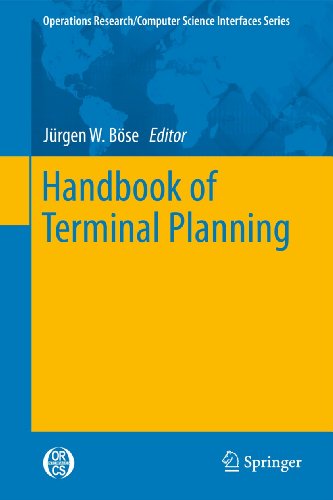

Most ebook files are in PDF format, so you can easily read them using various software such as Foxit Reader or directly on the Google Chrome browser.
Some ebook files are released by publishers in other formats such as .awz, .mobi, .epub, .fb2, etc. You may need to install specific software to read these formats on mobile/PC, such as Calibre.
Please read the tutorial at this link: https://ebookbell.com/faq
We offer FREE conversion to the popular formats you request; however, this may take some time. Therefore, right after payment, please email us, and we will try to provide the service as quickly as possible.
For some exceptional file formats or broken links (if any), please refrain from opening any disputes. Instead, email us first, and we will try to assist within a maximum of 6 hours.
EbookBell Team

4.4
82 reviewsContainer Terminals (CT) operate as central nodes in worldwide hub-and-spoke networks and link ocean-going vessels with smaller feeder vessels as well as with inbound and outbound hinterland transportation systems using road, rail, or inland waterways. The volume of transcontinental container flows has gained appreciably over the last five decades -- throughput figures of CT reached new records, frequently with double-digit annual growth rates. Stimulated by throughput requirements and stronger competition between terminals settled in the same region or serving a similar hinterland, respectively, cost efficiency and throughput capabilities become more and more important. Nowadays, both terminal capacity and costs have to be regarded as key indicators for CT competitiveness. In respect of this steady growth, this handbook focuses on planning activities being aimed at “order of magnitude improvements” in terminal performance and economic viability. On the one hand the book is intended to provide readership with technological and organizational CT basics for strategic planning. On the other hand this book offers methodical assistance for fundamental dimensioning of CT in terms of 'technique', 'organization' or 'man'. The former primarily considers comprehensive information about container handling technologies representing the state of the art for present terminal operations, while the latter refers to methodological support comprising in particular quantitative solutions and modeling techniques for strategic terminal decisions as well as straightforward design guidelines. The handbook includes an introductory contribution which gives an overview of strategic planning problems at CT and introduces the contributions of the volume with regard to their relationship in this field. Moreover, each paper contains a section or paragraph that describes the impact of findings investigated by the author(s) for problem-solving in long-term planning of CT (as an application domain). The handbook intends to provide solutions and insights that are valuable for both practitioners in industry who need effective planning approaches to overcome problems and weaknesses in terminal design/development and researchers who would like to inform themselves about the state of the art in methodology of strategic terminal planning or be inspired by new ideas. That is to say, the handbook is addressed to terminal planners in practice as well as to students of maritime courses of study and (application oriented) researchers in the maritime field.